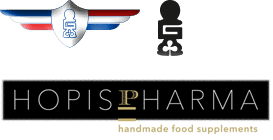Descrizione
CARATTERISTICHE DEL PRODOTTO
Il fungo che caratterizza questa produzione è Hericium detto anche Lion’s Mane, Old Man’s Beard. L’Hericium è caratterizzato per avere costituenti attivi quali diterpenoidi, steroidi, polisaccaridi assieme ad altri ingredienti funzionali e prebiotici quali ramnosio e mannosio.
Nelle capsule di Gastroeikes associamo il fungo con la liquerizia deglicirizzina che mostra proprietà sulla funzionalità del sistema digerente, in particolare l’assenza di acido glicirizzinico riduce gli effetti indesiderati sulla pressione di questo componente presente nella liquirizia.
Secondo la Medicina Tradizionale Cinese MTC
Meridiani: Stomaco, Milza, Intestino(crasso)
Azione: Yin,
Elementi associati: Acqua, Metallo, Terra
I riferimenti e le indicazioni alla MTC non vogliono in nessun modo essere sostituti della medicina occidentale, del consiglio medico e di una dieta variata.
INGREDIENTI:
- HERICIUM ERINACEUM E.S. TIT 40% polisaccaridi*
- GLYCYRRHIZA GLABRA(DEGLICERIZZINATA) E.S.*
COME UTILIZZARE IL PRODOTTO
1 capsula 3 volte al giorno preferibilmente prima dei pasti.
DOSI GIORNALIERE
Hericium 1500mg
Liquirizia deglicerizzinata 60mg
FORMATO
60 cps.
Vaso vetro tappo in alluminio/argento sigillo apposto a mano
* paese di origine R.P.China
BIBLIOGRAFIA
– Wu Y, Jiang H, Zhu E, Li J, Wang Q, Zhou W, Qin T, Wu X, Wu B, Huang Y. Hericium erinaceus polysaccharide facilitates restoration of injured intestinal mucosal immunity in Muscovy duck reovirus-infected Muscovy ducklings. Int J Biol Macromol. 2017 Sep 23. pii: S0141-8130(17)32140-2. doi: 10.1016/j.ijbiomac.2017.09.092
– Thongbai, B.; Rapior, S.; Hyde, K.D.; Wittstein, K.; Stadler, M. Hericium erinaceus, an amazing medicinal mushroom. Mycol. Prog. 2015, 14, 91–113.
– Ma, B.J.; Shen, J.W.; Yu, H.Y.; Ruan, Y.; Wu, T.T.; Zhao, X. Hericenones and erinacines: Stimulators of nerve growth factor (NGF) biosynthesis in Hericium erinaceus. Mycology 2010, 1, 92–98
– Zhang, J.; An, S.; Hu, W.; Teng, M.; Wang, X.; Qu, Y.; Liu, Y.; Yuan, Y.; Wang, D. The Neuroprotective Properties of Hericium erinaceus in Glutamate-Damaged Differentiated PC12 Cells and an Alzheimer’s Disease Mouse Model. Int. J. Mol. Sci. 2016, 17, 1810.
-Y. Tsukimi, C. Nozue, and S. Okabe, “Effects of leminoprazole, omeprazole and sucralfate on indomethacin-induced delayed healing of kissing gastric ulcers in rats,” Journal of Gastroenterology and Hepatology, vol. 11, no. 4, pp. 335–340, 1996.
–Federico Brandalise, Valentina Cesaroni, Andrej Gregori, et al., “Dietary Supplementation of Hericium erinaceus Increases Mossy Fiber-CA3 Hippocampal Neurotransmission and Recognition Memory in Wild-Type Mice,” Evidence-Based Complementary and Alternative Medicine, vol. 2017, Article ID 3864340, 13 pages, 2017. doi:10.1155/2017/3864340.
-K. Mori, S. Inatomi, K. Ouchi, Y. Azumi, and T. Tuchida, “Improving effects of the mushroom Yamabushitake (Hericium erinaceus) on mild cognitive impairment: a double-blind placebo-controlled clinical trial,” Phytotherapy Research, vol. 23, no. 3, pp. 367–372, 2009.
-J. M. Conner, K. M. Franks, A. K. Titterness et al., “NGF is essential for hippocampal plasticity and learning,” The Journal of Neuroscience, vol. 29, no. 35, pp. 10883–10889, 2009.
-K. Mori, Y. Obara, M. Hirota et al., “Nerve growth factor-inducing activity of Hericium erinaceus in 1321N1 human astrocytoma cells,” Biological and Pharmaceutical Bulletin, vol. 31, no. 9, pp. 1727–1732, 2008.
-G. Kempermann, “Adult neurogenesis: an evolutionary perspective,” Cold Spring Harbor Perspectives in Biology, vol. 8, no. 2, Article ID a018986, pp. 1–9, 2016.
-Jing-Yang Wong, Mahmood Ameen Abdulla, Jegadeesh Raman, et al., “Gastroprotective Effects of Lion’s Mane Mushroom Hericium erinaceus (Bull.:Fr.) Pers. (Aphyllophoromycetideae) Extract against Ethanol-Induced Ulcer in Rats,” Evidence-Based Complementary and Alternative Medicine, vol. 2013, Article ID 492976, 9 pages, 2013. doi:10.1155/2013/492976
-J. L. Wallace, “Recent advances in gastric ulcer therapeutics,” Current Opinion in Pharmacology, vol. 5, no. 6, pp. 573–577, 2005.
-J. Yamahara, M. Mochizuki, H. Q. Rong, H. Matsuda, and H. Fujimura, “The anti-ulcer effect in rats of ginger constituents,” Journal of Ethnopharmacology, vol. 23, no. 2-3, pp. 299–304, 1988.
-K.-H. Wong, M. Naidu, P. David et al., “Peripheral nerve regeneration following crush injury to rat peroneal nerve by aqueous extract of medicinal mushroom Hericium erinaceus (Bull.: Fr) Pers. (Aphyllophoromycetideae),” Evidence-Based Complementary and Alternative Medicine, vol. 2011, Article ID 580752, 2011.
–Liu J, Kandasamy S, Zhang J, Kirby CW, Karakach T, Hafting J, Critchley AT, Evans F, Prithiviraj B. Prebiotic effects of diet supplemented with the cultivated red seaweed Chondrus crispus or with fructo-oligo-saccharide on host immunity, colonic microbiota and gut microbial metabolites. BMC Complement Altern Med. 2015 Aug 14;15:279. doi: 10.1186/s12906-015-0802-5.
–Wu F, Zhou C, Zhou D, Ou S, Zhang X, Huang H. Structure characterization of a novel polysaccharide from Hericium erinaceus fruiting bodies and its immunomodulatory activities. Food Funct. 2017 Nov 23. doi: 10.1039/c7fo01389b.






